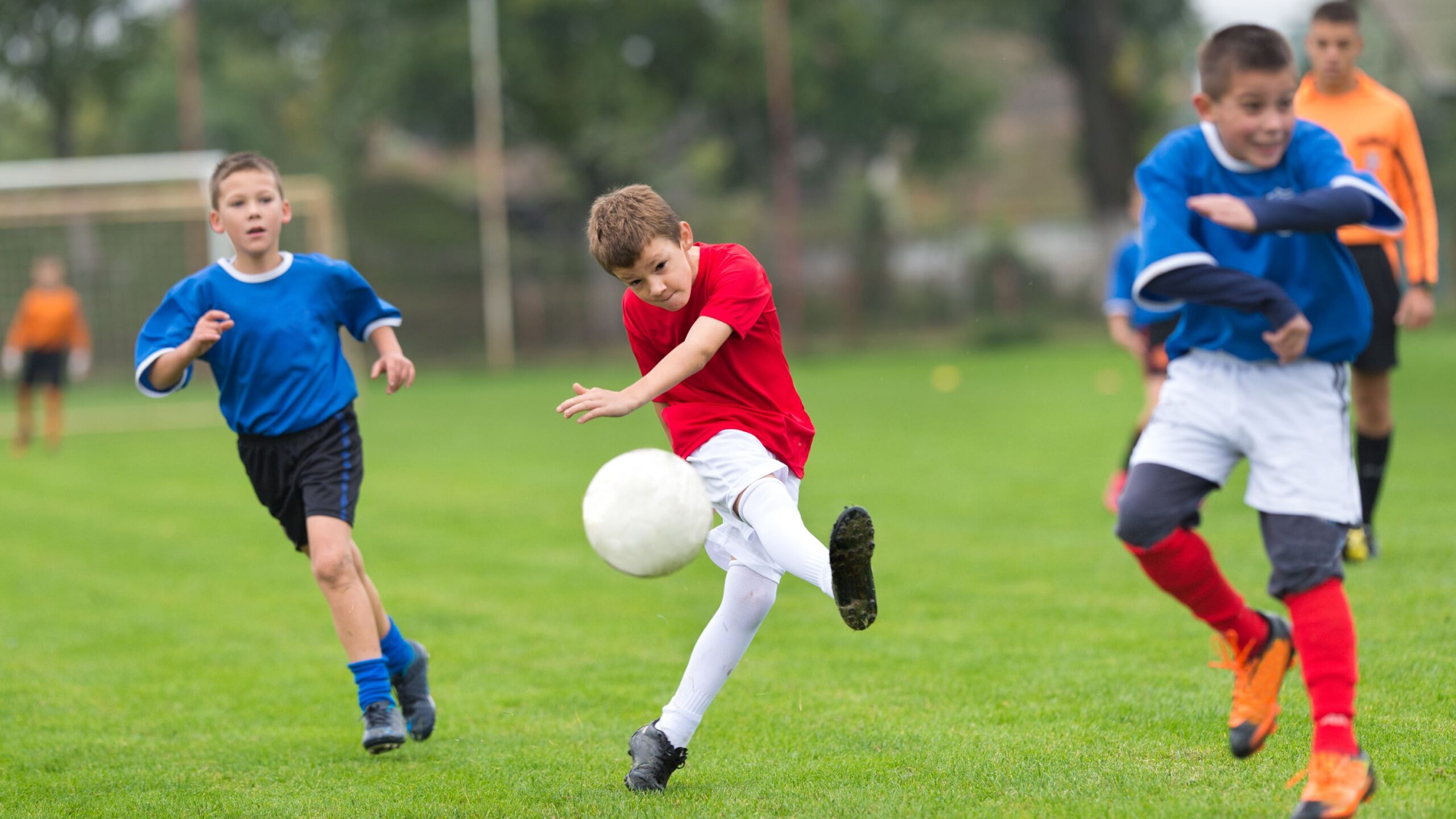The Hidden Side of Sports Culture
Sports can be a powerful force for good, teaching boys teamwork, discipline, and resilience. But beneath the surface, a darker narrative often unfolds—one that promotes toxic masculinity and pressures young athletes to conform to harmful stereotypes. This article explores why sports can sometimes foster a toxic environment for boys and offers practical steps to create a healthier, more inclusive culture.
What Is Toxic Masculinity in Sports?
Toxic masculinity refers to cultural norms that equate manhood with aggression, dominance, and emotional suppression. In sports, this manifests as an unspoken rulebook: boys are taught to “tough it out,” hide pain, and prioritize winning over well-being. Phrases like “man up” or “don’t cry like a girl” reinforce these expectations, creating a culture where vulnerability is weakness.
The Pressure to Conform
From a young age, boys in sports face intense pressure to embody hyper-masculine ideals. Coaches and peers may praise those who play through injuries, equating pain tolerance with strength. This mindset can lead to long-term physical and mental health issues, as boys learn to ignore their bodies’ signals.
Historical Roots of the Problem
The link between sports and masculinity dates back centuries. In ancient Rome, gladiator arenas glorified violence as a masculine ideal. Modern sports, particularly contact sports like football and hockey, often carry this legacy, framing athletes as warriors who must suppress emotions to succeed. Understanding this history helps us see why toxic norms persist.
How Toxic Culture Impacts Boys
The effects of toxic sports culture ripple far beyond the field, shaping boys’ mental health, behavior, and relationships. Here’s a closer look at the consequences.
Mental Health Struggles
Suppressing emotions can lead to anxiety, depression, and low self-esteem. Boys who feel they can’t express vulnerability may avoid seeking help, perpetuating a cycle of silent suffering. For example, a 2024 study noted that male athletes are less likely to seek mental health support due to stigma.
Aggression and Violence
Sports that glorify aggression can normalize violent behavior off the field. Research shows that male athletes are more likely to exhibit aggressive tendencies, including bullying and, in extreme cases, violence against others. High-profile cases, like NFL players involved in domestic violence, highlight this troubling trend.
Impact on Team Dynamics
A culture of hyper-masculinity can erode team cohesion. When boys feel pressured to compete for dominance rather than collaborate, it leads to conflict and mistrust. This undermines the teamwork that sports are meant to foster.
Real Stories: The Human Cost
I once coached a youth soccer team where a 12-year-old boy, Jake, sprained his ankle but refused to sit out. His father, echoing the coach’s rhetoric, told him to “push through the pain like a man.” Jake played, worsening his injury, and later confided he felt trapped by expectations. Stories like Jake’s are all too common, reflecting a culture that prioritizes toughness over health.
Another example comes from a friend, Mark, who played high school football. He recalls teammates mocking a player who cried after a loss, calling him “weak.” The shame stuck with that boy, who later struggled with depression. These stories show how deeply toxic norms can wound young athletes.
Why Boys Are Vulnerable to Toxic Sports Culture
Several factors make boys particularly susceptible to these harmful dynamics.
- Social Conditioning: From childhood, boys are taught that emotions are a sign of weakness, especially in competitive settings like sports.
- Role Models: Coaches and professional athletes often reinforce hyper-masculine ideals, whether intentionally or not.
- Peer Pressure: Teammates may ridicule those who don’t conform, creating a culture of conformity over authenticity.
- Cultural Narratives: Media glorifies “tough” athletes, perpetuating the idea that vulnerability has no place in sports.
The Benefits of Sports Done Right
Despite these challenges, sports can be a force for positive growth when approached thoughtfully. Here’s how healthy sports environments benefit boys:
| Benefit | Description |
|---|---|
| Mental Resilience | Sports teach boys to bounce back from setbacks, fostering grit and adaptability. |
| Social Skills | Team sports build communication and collaboration, essential for relationships. |
| Physical Health | Regular activity promotes fitness, reducing risks of obesity and chronic illness. |
| Emotional Growth | Positive coaching can help boys process emotions in a supportive environment. |
Comparing Toxic vs. Healthy Sports Cultures
| Aspect | Toxic Culture | Healthy Culture |
|---|---|---|
| Emotional Expression | Discouraged; “tough it out” mentality | Encouraged; vulnerability is normalized |
| Coaching Style | Authoritarian, win-focused | Supportive, growth-focused |
| Team Dynamics | Competitive, hierarchical | Collaborative, inclusive |
| Mental Health | Ignored or stigmatized | Prioritized with resources and open dialogue |
How to Unravel Toxic Sports Culture
Changing this culture requires intentional effort from coaches, parents, and communities. Here are actionable steps to foster a healthier environment.
Reframe Masculinity in Coaching
Coaches play a pivotal role in shaping young athletes. By emphasizing emotional intelligence over aggression, they can redefine what it means to be a “strong” man. For example, Dan Blitstein, a youth soccer coach, encourages his players to express their feelings, creating a safe space for vulnerability.
Encourage Open Dialogue
Creating space for boys to talk about their emotions is crucial. Coaches and parents should model vulnerability and provide resources like mental health workshops. Programs like the NHLPA’s First Line Program are steps in the right direction, offering athletes tools to address mental health.
Promote Inclusive Role Models
Highlighting athletes who challenge stereotypes—such as those who speak openly about mental health—can shift cultural norms. Thierry Henry’s candid discussion about his depression is a powerful example of breaking the silence.
Educate Parents and Communities
Parents often reinforce toxic norms without realizing it. Workshops and campaigns, like those from the Positive Coaching Alliance, can teach parents to prioritize growth over winning and support their child’s emotional well-being.
Pros and Cons of Current Efforts
Pros:
- Growing awareness of mental health in sports.
- Initiatives like the Positive Coaching Alliance promote positive change.
- More athletes are speaking out, normalizing vulnerability.
Cons:
- Change is slow; many coaches still rely on outdated methods.
- Cultural stigma around mental health persists.
- Limited access to resources in low-income communities.
People Also Ask (PAA)
Why is toxic masculinity a problem in sports?
Toxic masculinity in sports pressures boys to suppress emotions and prioritize aggression, leading to mental health issues and harmful behaviors. It creates an environment where vulnerability is stigmatized, affecting boys’ well-being.
How can coaches help reduce toxic masculinity?
Coaches can foster emotional expression, prioritize player growth over winning, and model positive behaviors. Training programs like those from the Positive Coaching Alliance offer practical tools.
What are the signs of a toxic sports environment?
Signs include bullying, shaming vulnerability, prioritizing winning over health, and discouraging emotional expression. These create a culture of silence and aggression.
Where can parents find resources to support healthy sports culture?
Organizations like the Positive Coaching Alliance (positivecoach.org) and local mental health programs offer resources. Community workshops and online platforms also provide guidance.
Best Tools and Resources for Change
- Positive Coaching Alliance: Offers training for coaches to foster positive sports environments. Visit positivecoach.org for workshops and resources.
- NHLPA First Line Program: Provides mental health support for athletes, adaptable for youth sports. Learn more at nhlpa.com.
- Mental Health Apps: Tools like Headspace or Calm can help boys manage stress and build emotional resilience.
- Local Community Programs: Many YMCAs and recreation centers offer inclusive sports programs focused on growth.
FAQ Section
What is toxic masculinity in sports?
Toxic masculinity refers to societal expectations that pressure boys to be aggressive, dominant, and emotionally stoic. In sports, this shows up as shaming vulnerability or praising risky behaviors like playing through injuries.
How does toxic sports culture affect boys’ mental health?
It can lead to anxiety, depression, and low self-esteem by discouraging emotional expression. Boys may feel trapped in a cycle of silence, avoiding help due to stigma.
What can parents do to support their sons in sports?
Parents should encourage open communication, prioritize health over winning, and seek coaches who value emotional growth. Engaging with resources like the Positive Coaching Alliance helps.
Are there sports programs that promote healthy masculinity?
Yes, programs like the Positive Coaching Alliance and local inclusive leagues focus on growth, teamwork, and emotional well-being, creating healthier environments for boys.
How can schools contribute to changing sports culture?
Schools can implement mental health education, train coaches in positive methods, and promote inclusive sports programs that value all athletes, regardless of skill level.
A Call to Action
Unraveling toxic sports culture starts with us—parents, coaches, and communities. By fostering environments where boys feel safe to be themselves, we can help them grow into confident, emotionally healthy men. Let’s cheer for vulnerability as loudly as we cheer for victories. Share this article with a coach or parent who can make a difference, and explore resources like the Positive Coaching Alliance to take the first step.
For more information on creating positive sports environments, visit Positive Coaching Alliance.









Leave a Reply